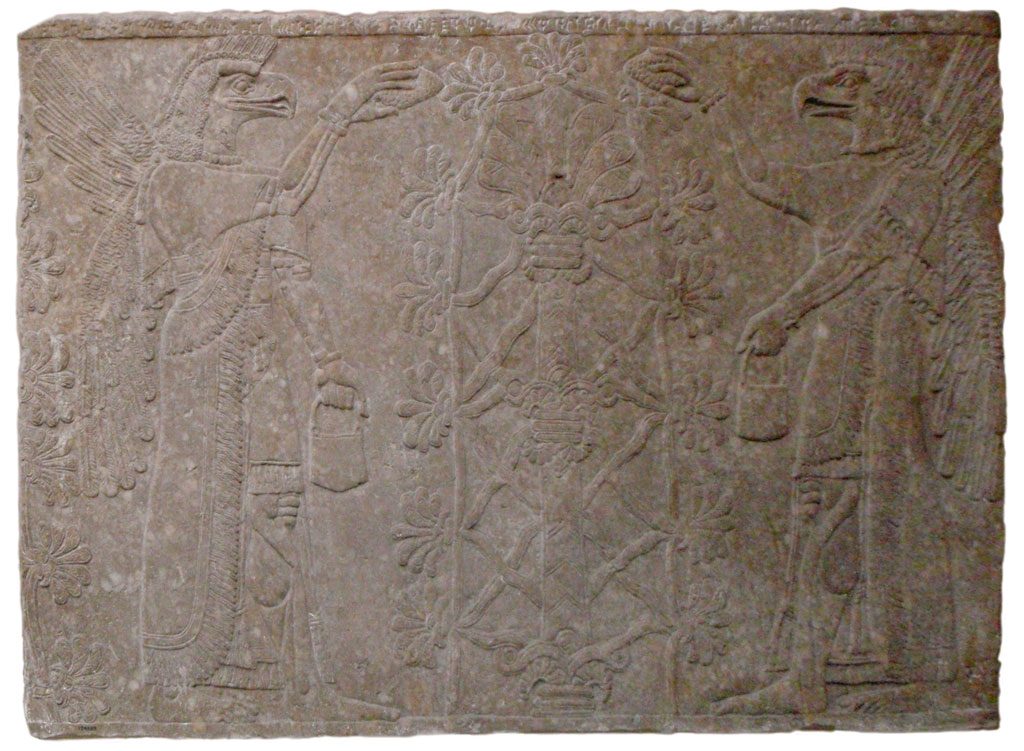Previous page the High Priestess

The caption in the British Museum, describes this as a “sacred tree” I would suggest that ‘The Tree of Life’ would be more accurate. What we see is a central trunk and flowering top, encased in a web of bands which form an outer shell with extra flower-like protrusions.
The two bird headed, winged humanoids, each hold a ‘man-bag’ (as Graham Hancock would call them) and a raised pine cone. The caption calls these “protective spirits”, we tend, or are taught to imagine such figures as beneficial in some way. Hence the man-bags are generally assumed to be a means for supernatural beings to bring thing, for us or for themselves during their visit, but I have come to imagine something quite different.
I consider the above depiction to be akin to a cattle farm or an orchard, IE the characters are farmers, harvesting. The Tree of Life is in bondage, and the bird-men collect piney fruit to be gathered in their man-bags, as milk is collected from calving cows in a pail.

Here is a clearer and more complex version of the Tree of Life. The two figures hold regal sceptres and have wings like the bird-men (not pictured.) They don’t carry man-bags like many similar figures, but if you look closely at their raised hands, you can see discolouration and texture, which makes it seem that a handle like those of man-bags has been removed, along probably with the rest of the man-bags. If that is the case, these figures would appear to be offering their harvest to the figure that rides a bird-like flying machine.
Notice too, that at the centre of the trunk, and below the top flower is a particular binding, this shape looks to me like a progenitor to the fleur-de-lys, which is a symbol of monarchies, especially French.
Also consider that the basic shape of the Assyrian Tree of Life is very similar in nature to the Sefirot (wiki) of Kabbalah
Next page Tree of Life – Egyptian
